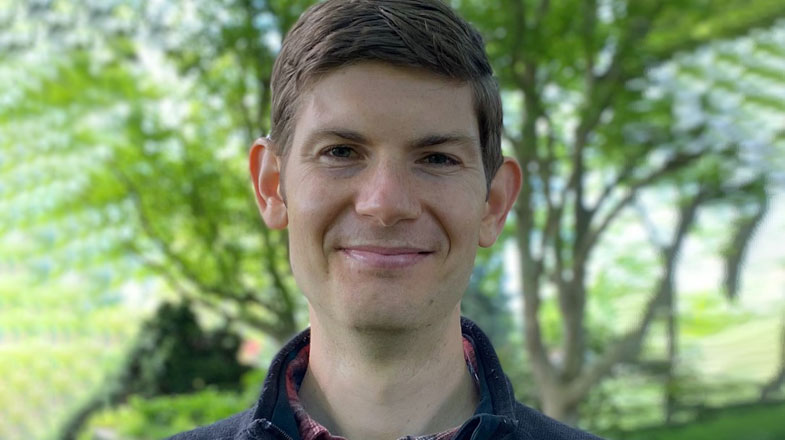Meet The People Of PGS: Connor
Through the “People of PGS” series, we spotlight the names and faces behind the great work we do in PGS. Next up is Connor, a Senior Environmental Health & Safety (EHS) Associate, who turned his passion for nature into a rewarding career.
For Connor, no two days are exactly the same – and that’s just how he likes it. At the start of the week, he could be reviewing storm water mitigation practices at a construction site, and at the end of the week, he could be in a manufacturing clean room weighing in on a root cause investigation.

“The variability of my job is what makes it exciting,” Connor said. “A continuous flux of new operations and cutting-edge science at our facility brings new questions and challenges each day.”
As a child, Connor loved nature and was fascinated by the environment, and he eventually turned that passion into an exciting career. Before joining Pfizer as an intern in 2016, he spent time as an exchange student in Bangkok, Thailand, comparing the environmental performance of different carbon capture technologies on Thai power plants and cement kilns.
“Having a job where I can tangibly see the positive difference and strides we are making toward sustainability fulfills me,” Connor said.
The impact Connor – and the whole EHS team – has made within PGS is impressive. In addition to his responsibilities at the site, Connor leads Waste Savers in Biotech (WaSaBi), a team that works across the Biotech Operating Unit (OpU) to improve the responsible management of Pfizer’s waste streams. Since the team’s initiation in 2018, the Biotech OpU has reduced waste going to a landfill, increased recycling rates, and grew waste material reuse. The team is actively working to build on this progress through 2025.
And that’s not all. Connor also leads his site’s Wildlife Team – a group of colleagues who manage the 72 acres of the site’s property dedicated to land conservation, habitat preservation and the enablement of local biodiversity. The vast site includes two beehives, a fishing pond, meadows with perennial wildflowers, four hiking trails, birdhouses, fruit-bearing trees, gourds and even blueberry bushes.
Connor says having a wildlife preserve like this on-site not only benefits the environment, but it also helps facilitate important conversations with colleagues about the role we all play in sustainability.
“It’s a testament to the importance of the environmental culture of a site along with its technical competency in impact reduction,” Connor said. “The hope is that these wildlife areas give colleagues the opportunity to see that environmental stewardship can encompass much more than turning the lights out or fixing a faucet. It’s a lifestyle in which we actively care for the environment through our daily choices.”
12.08.2025
12.03.2025
11.21.2025
11.12.2025
11.06.2025
